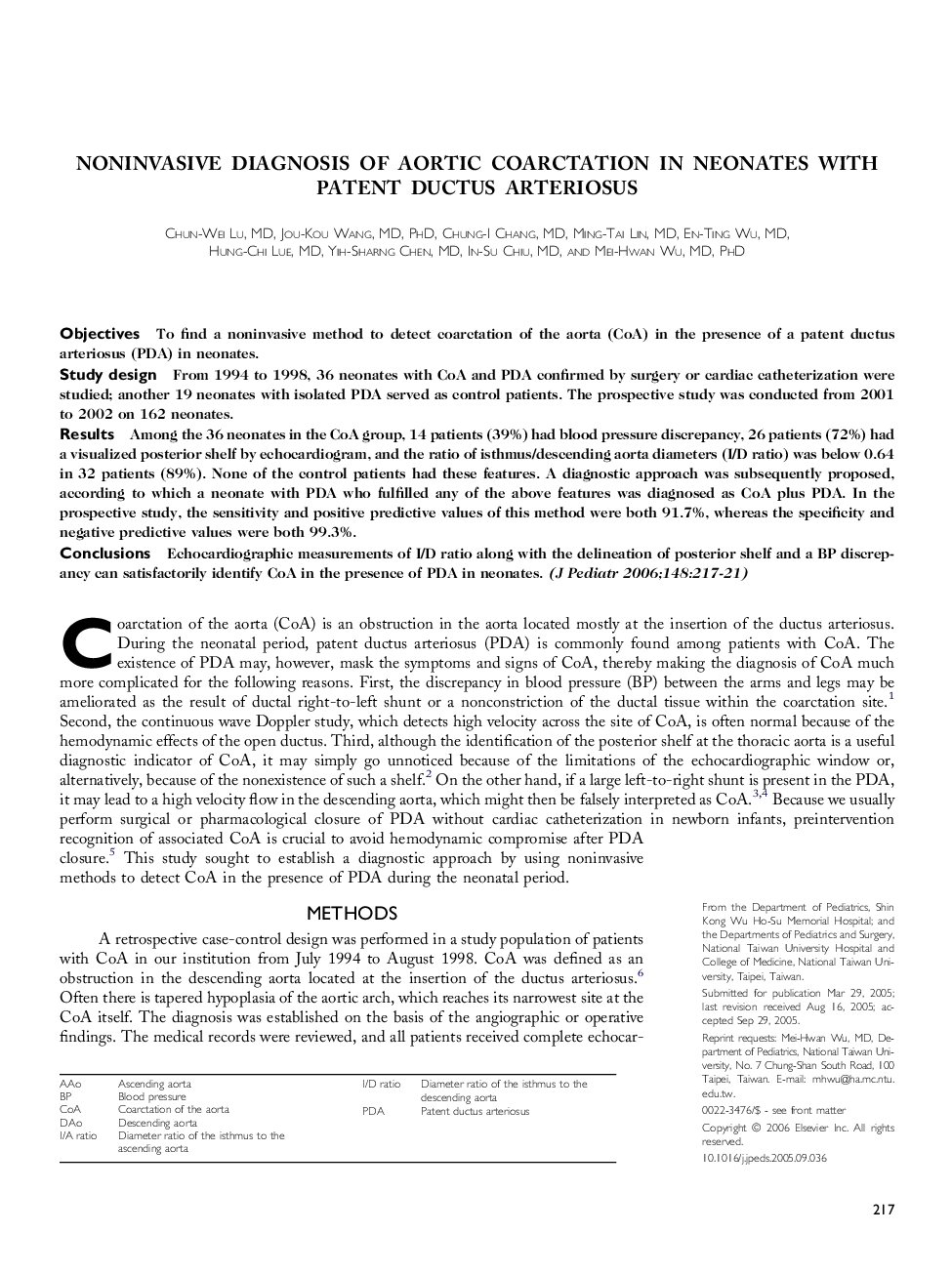| Article ID | Journal | Published Year | Pages | File Type |
|---|---|---|---|---|
| 4169567 | The Journal of Pediatrics | 2006 | 5 Pages |
ObjectivesTo find a noninvasive method to detect coarctation of the aorta (CoA) in the presence of a patent ductus arteriosus (PDA) in neonates.Study designFrom 1994 to 1998, 36 neonates with CoA and PDA confirmed by surgery or cardiac catheterization were studied; another 19 neonates with isolated PDA served as control patients. The prospective study was conducted from 2001 to 2002 on 162 neonates.ResultsAmong the 36 neonates in the CoA group, 14 patients (39%) had blood pressure discrepancy, 26 patients (72%) had a visualized posterior shelf by echocardiogram, and the ratio of isthmus/descending aorta diameters (I/D ratio) was below 0.64 in 32 patients (89%). None of the control patients had these features. A diagnostic approach was subsequently proposed, according to which a neonate with PDA who fulfilled any of the above features was diagnosed as CoA plus PDA. In the prospective study, the sensitivity and positive predictive values of this method were both 91.7%, whereas the specificity and negative predictive values were both 99.3%.ConclusionsEchocardiographic measurements of I/D ratio along with the delineation of posterior shelf and a BP discrepancy can satisfactorily identify CoA in the presence of PDA in neonates.
